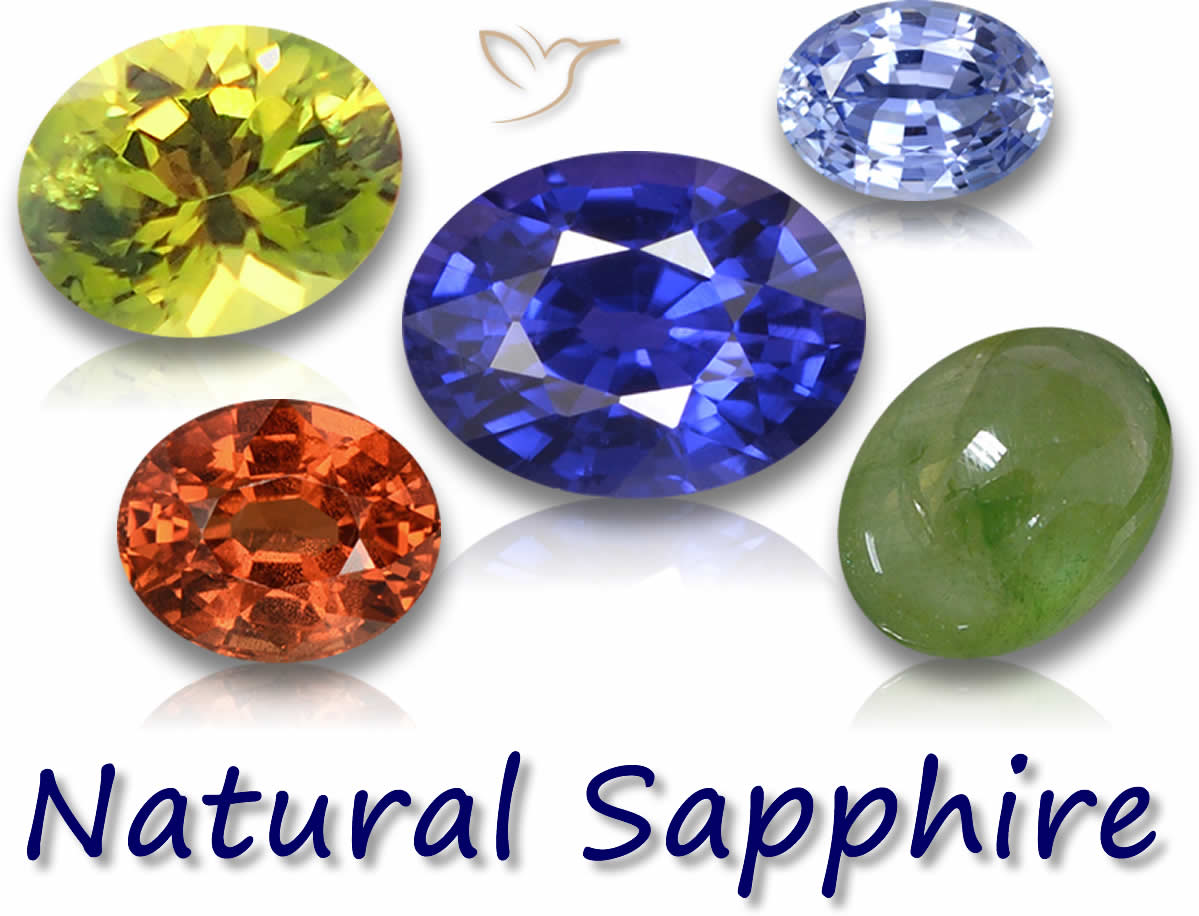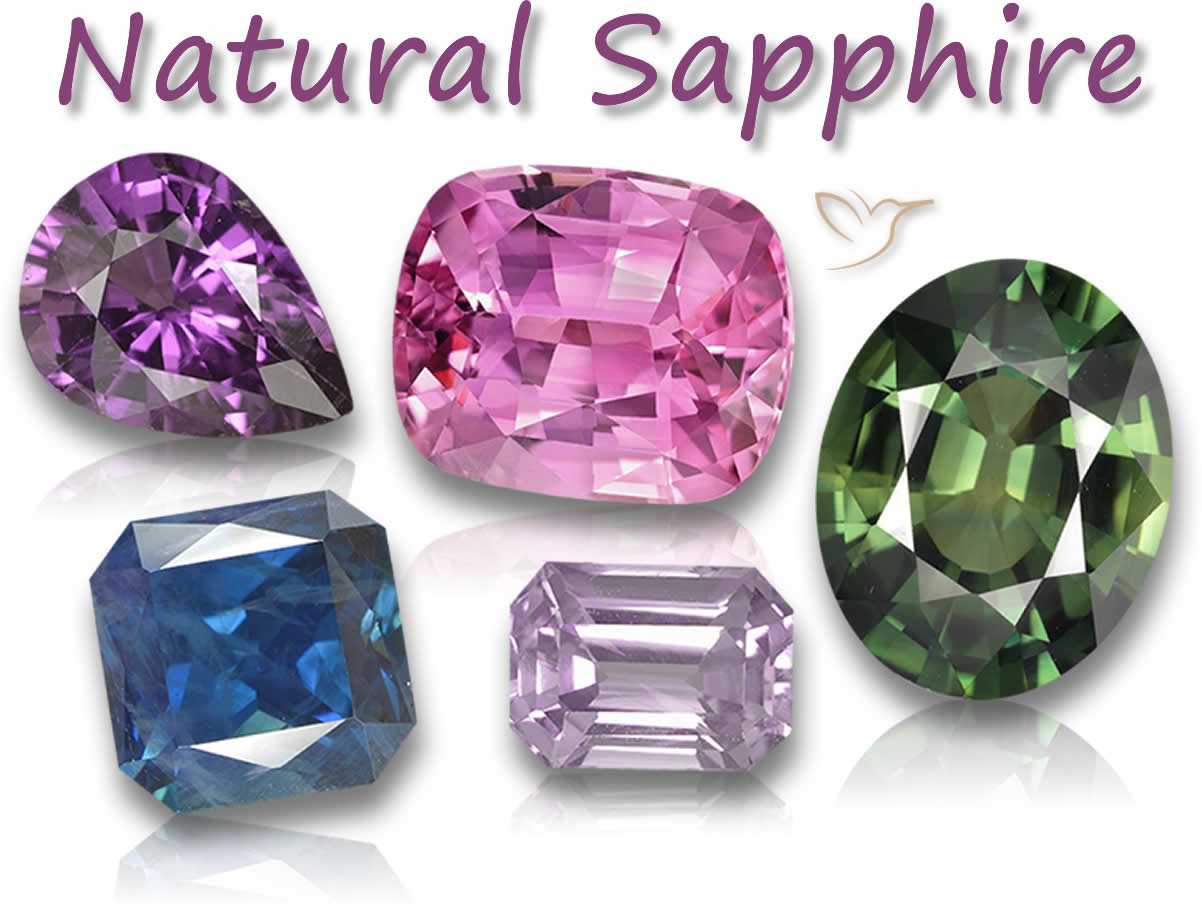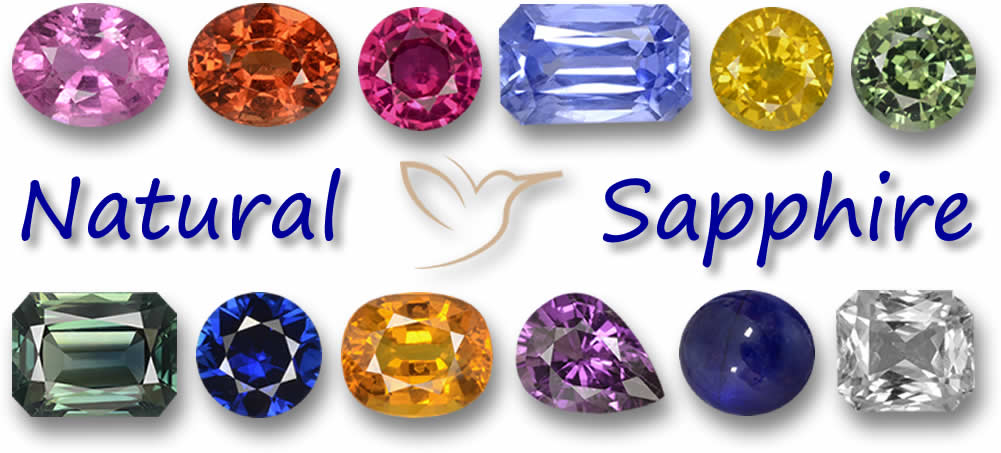What is a Natural Sapphire?
Introduction

Many gemstone enthusiasts seek out natural stones. While high-quality synthetics are available for gems like sapphire and ruby, they don't hold the same appeal for most buyers, even though synthetic corundum matches the chemical makeup of natural ruby and sapphire. For a deeper dive, check out our Sapphire Gemstone Information.
Synthetics vs. Natural Sapphires
Synthetic sapphire, created through the flame fusion process, consists of aluminum oxide crystals, identical to those in natural loose sapphire. Some might call these synthetics 'fake,' but that's not quite right. Synthetic sapphire is genuine sapphire - it's just not formed naturally. This distinction makes it less desirable for many.
Now, consider sapphires that form in the earth but are later improved by common trade techniques. Are these still natural? Opinions vary. Some dealers say yes, while others insist only untreated sapphires qualify as truly natural. And then there are those who accept certain treatments but reject others. So, where should we draw the line? Let's explore that.
The Role of Treatments

Here's a perspective from a dealer in high-value sapphires:
If extreme heating of a sapphire is acceptable to you, you have entered a slippery slope. If humans have a hand in creating the beauty through heating and processing, why not accept the addition of diffusion and chemical treatment to enhance the color of a stone? This would make it even more beautiful.
If you are willing to accept something that is not rare just because it is beautiful, you are better off going back and just accepting something entirely fake, it will save you a lot of money.
This view warns against accepting any treatments, suggesting it leads down a path where nothing is truly natural. But think about it - we already accept some human intervention. Buyers expect sapphires to be cut and polished by experts. Rough natural sapphire isn't much to look at; skilled cutting reveals its color and brilliance. To learn about potential pitfalls in the market, read about the Biggest Star Sapphire?
Heating: An Acceptable Enhancement?
Should we allow any processing that highlights the gem's inherent properties? That could include heat treatment, which alters color and clarity based on the stone's chemistry. In fact, heating mimics the natural formation process under earth's heat and pressure.

Lattice Diffusion: Crossing the Line?
Many in the industry accept heating but reject lattice diffusion, a heat-based treatment adding chemicals like titanium and iron to change color. Unlike simple heating, this introduces foreign elements, which isn't seen as natural.
Yet, as corundum expert Richard Hughes points out, ordinary heating diffuses aluminum vacancies and hydrogen in and out; lattice diffusion operates similarly but with heavier elements like titanium and iron. Once treatment starts, it triggers complex reactions in the gem.
Conclusion: Understanding Enhancements
We can use 'natural' for gems mined from the earth, setting them apart from lab-created ones. But when enhancements maximize beauty, the boundary between natural and artificial blurs. Discover the deeper Sapphire Meaning and Powers that contribute to their timeless appeal.
For buyers, the key is knowing the treatments used and how they impact value. These methods turn otherwise unsellable material into gems, keeping supply steady. Without them, many gems would be so rare we'd talk more about synthetics than naturals. See examples in our guide to the Most Valuable Sapphires.
Frequently Asked Questions
What makes a sapphire natural?
A natural sapphire is one mined from the earth, formed through geological processes, as opposed to being created in a lab.
Are synthetic sapphires real?
Yes, synthetic sapphires are real sapphires chemically, but they lack the natural formation that many buyers value.
Is heat treatment considered natural?
Heat treatment is widely accepted as it enhances the stone's inherent properties, similar to natural earth processes.
What is lattice diffusion?
Lattice diffusion is a treatment that adds chemicals during heating to alter the sapphire's color, which some view as less natural.
Why do treatments matter for buyers?
Treatments affect the gem's value and rarity; understanding them helps you make informed purchases.

